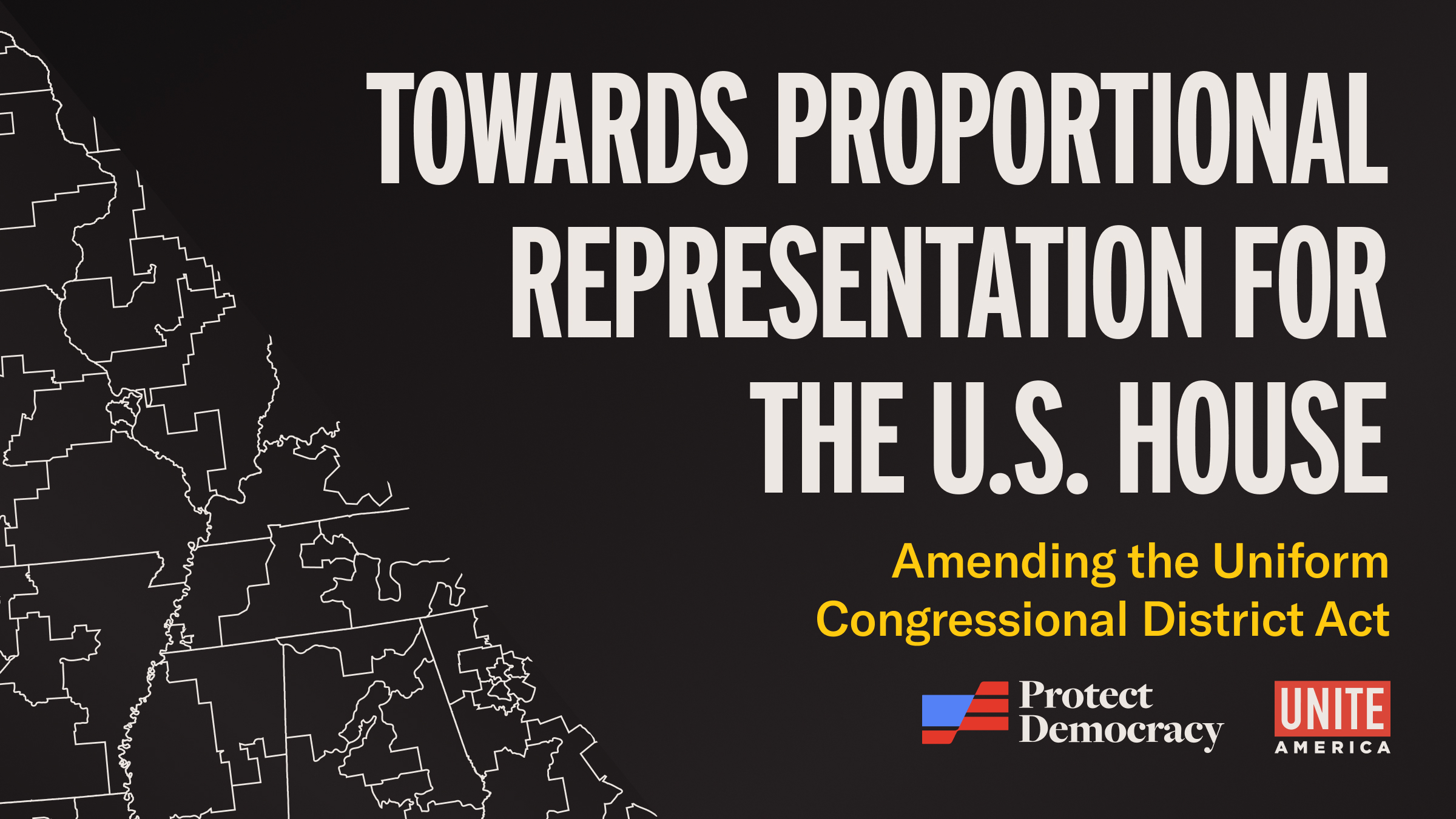Towards Proportional Representation for the U.S. House
- March 28, 2023

In Towards Proportional Representation for the U.S. House, Protect Democracy and Unite America examine a 1967 statute enacted by Congress—the Uniform Congressional District Act (UCDA)—that mandates the use of single-member districts for House elections; how the system is weakening the foundations of our democracy; and policy options for reform. Though single-member districts are used in U.S. House elections, proportional multi-member districts are more common across democracies. The former system is a winner-take-all one: a single candidate is elected by either a majority or plurality to represent an entire district. The latter is a system of proportional representation: multiple winners secure legislative seats in rough proportion to the votes they receive.
Each American lives in a congressional district in which every two years they may vote for a single official to alone represent their district in the U.S. House of Representatives. This reality is so familiar to most that it perhaps appears self-evident: how else would elections work? Globally, though, this is unusual among democracies; and it has not been the norm for much of American history.”
Towards Proportional Representation for The U.S. House
Read the report Read the report
Drawing on decades of scholarly work, the report finds that replacing current winner-take-all elections with a proportional system of representation could curb gerrymandering; increase the share of competitive congressional seats; expand the ability of racial minorities to elect candidates of their choice; allow conservatives and liberals to gain representation in proportion to their actual support within a state; decrease dangerous levels of polarization; and lessen political extremism and the risk of political violence, among other effects.
As one scholar concludes in a global study of democratization, “if any generalization about institutional design is sustainable,” it is that winner-take-all electoral systems “are ill-advised for countries with deep ethnic, regional, religious, or other emotional and polarizing divisions.” Towards Proportional Representation takes stock of the House’s winner-take-all system and options for amending federal law to address its deficiencies.
“Unlike many other big, structural reforms that require constitutional amendment, the House could adopt a more proportional system for its elections through regular lawmaking,” says Beau Tremitiere, a co-author and counsel at Protect Democracy. “This report intends to be a guide for understanding the current statute’s history and the critical considerations Congress should grapple with in amending it.”
Against an analysis of the statute’s history and the benefits and risks of change, the report outlines a roadmap for reform—identifying key policy choices and policy design principles to guide future lawmaking.
“The House’s electoral system began evolving immediately after the Founding—just as the Framers intended,” says Grant Tudor, a co-author and policy advocate at Protect Democracy. “In that tradition, this is about imagining what the next iteration of a more representative House might be.”
Related Content
It can happen here.
We can stop it.
Defeating authoritarianism is going to take all of us. Everyone and every institution has a role to play. Together, we can protect democracy.
Donate
Sign Up for Updates Sign Up for Updates
Explore Careers Explore Careers
How to Protect Democracy How to Protect Democracy



